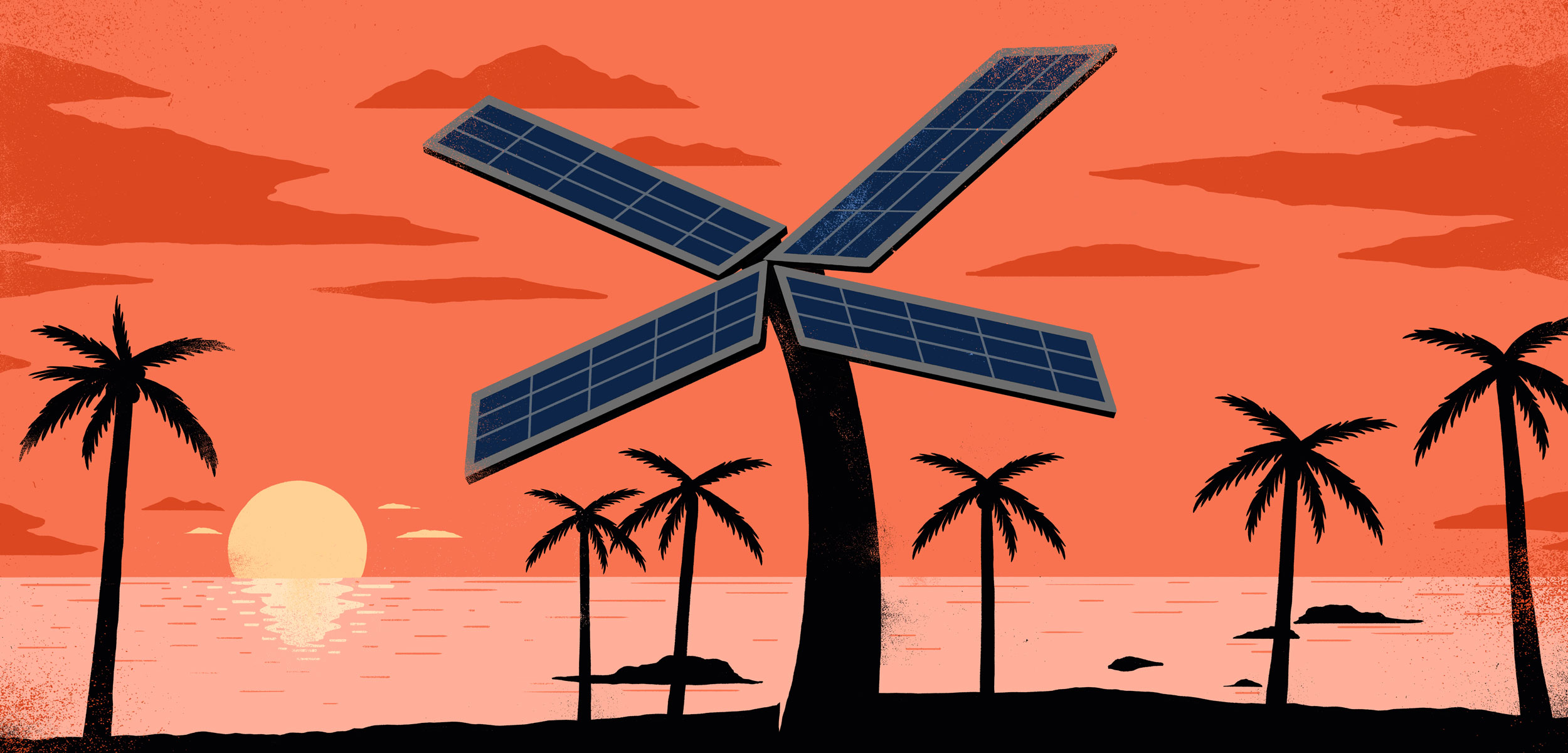From Hakai Magazine:
Can the small Hawaiian island of Moloka‘i and its utility get along well enough to teach the rest of the world how to get off fossil-fueled electricity?

Moloka‘i is a bastion of sanity and understatement at the center of the Hawaiian archipelago. Just 40 kilometers of open water away from O‘ahu, the island is a far cry from Honolulu’s hectic tiki bars and tourists, universities, cargo yards, and warships. On Moloka‘i, agriculture and subsistence hunting and fishing still sustain many of the 7,500 or so residents, and visitors are few. There are no traffic lights, and the roadsides are peppered with hand-painted signs extolling Indigenous rights and rejecting a litany of perceived intrusions from pesticides and cruise ships to short-term vacation rentals and GMOs. The few tourists who do make the hop over rank mailing a coconut home as their top experience.
On the surface, nothing about this bucolic place suggests it as the central hub around which a cleaner, high-tech electrical future might be built. Yet the island could serve as a model for Hawai‘i as the state navigates transitioning its entire power supply to renewable sources.
Honolulu-based Hawaiian Electric, the investor-owned utility that controls Moloka‘i’s grid, must meet a mandate from the state legislature to convert the five island grids it operates to 100 percent renewable energy by 2045. No utility on Earth knows for sure how to accomplish that yet. Pushing Moloka‘i there first and fast, Hawaiian Electric decided, would provide insight and inspiration.
The state of Hawai‘i nearly doubled renewable power generation between 2012 and 2017, but it still constitutes less than a third of the electrical supply. Hawai‘i’s power plants burned 1,438 million liters of petroleum in 2017, equivalent to running three-quarters of a million cars. Colton Ching, Hawaiian Electric senior vice president for planning and technology, says getting the rest of the way will require revamping the electrical grid to balance supply and demand as wind and solar energy fluctuate with the weather....MUCH MORE*"It's Incredible that an institution as well respected as the FT would stoop to this level"
**The Orkney Energy Miracle
I had assumed that after upending Sark's quiet society with her reporting on the electricity monopoly that the Financial Times' Jemima Kelly would continue her tour of the isles and go north to Orkney to investigate their power situation.Energy: Deep Time and an Uncertain Future on the Orkney Islands
But that wasn't to be. Apparently she prefers Athens to visiting the Orcadians off the tippy-tip of Scotland, 59°0′ North latitude, in the middle of winter.
Go figure....
Continuing our exploration of the Orcadians, their islands, and the future of energy....
Discerning reader will note that, again following Ms Kelly's playbook, with today's post we've switched to somewhat sunnier locales